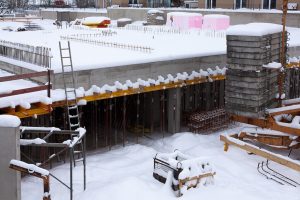 Making sure your business is a safe place for people to work, shop, or visit is essential. Whether you’re a public-facing high-street retailer, a factory with a growing workforce or your clients are visiting your offices in an industrial estate, there are many hazards you should be looking out for.
Making sure your business is a safe place for people to work, shop, or visit is essential. Whether you’re a public-facing high-street retailer, a factory with a growing workforce or your clients are visiting your offices in an industrial estate, there are many hazards you should be looking out for.
Slip and trip accidents increase during the Autumn and Winter season for a number of reasons: there is less daylight, leaves fall onto paths and become wet and slippery and cold weather spells cause ice and snow to build up on paths. There are effective actions that you can take to reduce the risk of a slip or trip. Regardless of the size of your site, always ensure that regularly used walkways are promptly tackled.
Carry out a risk assessment – Under the Management of Health and Safety at Work Regulations 1999, a risk assessment is a legal requirement that involves identifying sensible measures to control hazards if you’re an employer, your work activity is mentioned in the regulations, or your work poses a risk to others.
Identify hazards outside your business – These are mainly the result of wet and icy weather. Places where hazards could occur include Company car park and its adjoining road, Pavement or pathways etc
Identify hazards inside your business – These can mainly be the result of darker days and colder temperatures. Places where hazards could happen include the entrance areas of your business, dark warehouses, unlit corridors or stairwells for example.
Is there is enough lighting around your workplace for you and your workers to be able to see and avoid hazards that might be on the ground? The easiest way to find out is to ask your employees.
Fallen leaves that become wet or have started to decay can create slip risks in two ways, they hide any hazard that may be on the path or they themselves create a slip risk.
Put in place a procedure for removing leaves at regular intervals; you might even consider removing the offending bushes or trees altogether.
In dealing with rainwater:
The most common method used to de-ice floors is gritting as it is relatively cheap, quick to apply and easy to spread. Rock salt (plain and treated) is the most commonly used ‘grit’. It is the substance used on public roads by the highways authority.
Salt can stop ice forming and cause existing ice or snow to melt. It is most effective when it is ground down, but this will take far longer on pedestrian areas than on roads.
Gritting should be carried out when frost, ice or snow is forecast or when walkways are likely to be damp or wet and the floor temperatures are at, or below freezing. The best times are early in evening before the frost settles and/or early in the morning before employees arrive. Salt doesn’t work instantly; it needs sufficient time to dissolve into the moisture on the floor.
If you grit when it is raining heavily the salt will be washed away, causing a problem if the rain then turns to snow. Compacted snow, which turns to ice, is difficult to treat effectively with grit. Be aware that ‘dawn frost’ can occur on dry surfaces, when early morning dew forms and freezes on impact with the cold surface. It can be difficult to predict when or where this condition will occur.
Contact us if you require further information.